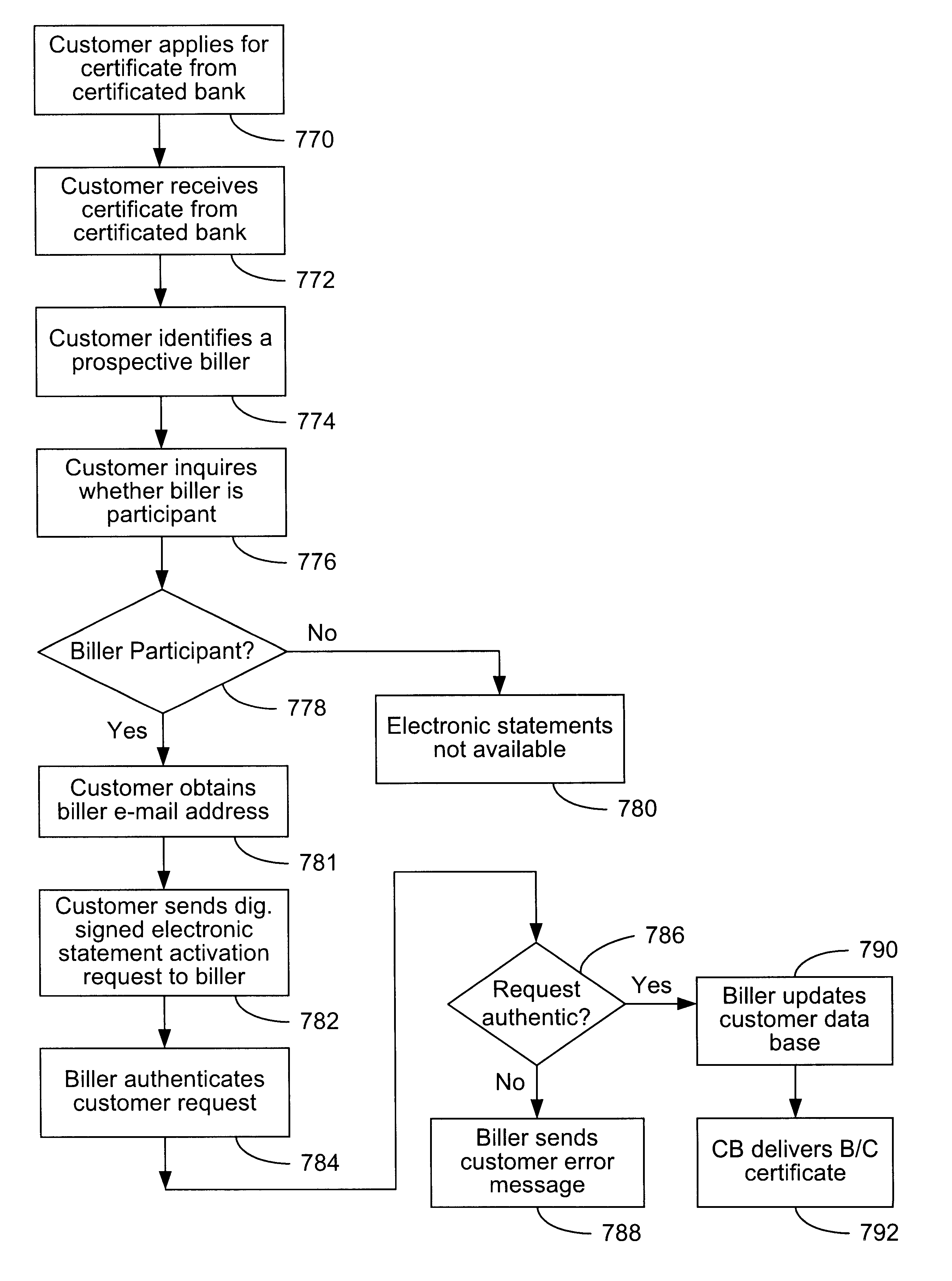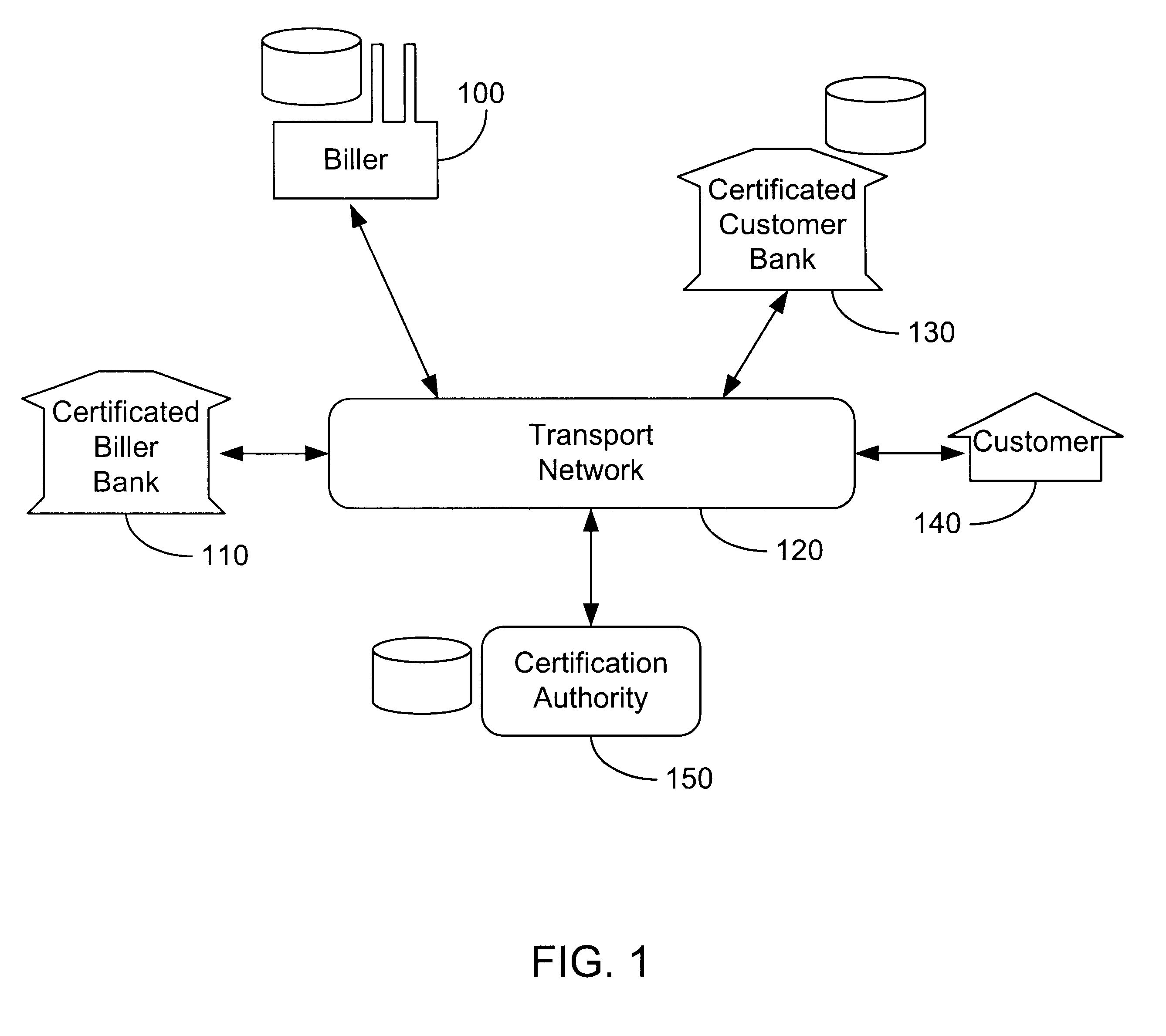Secure interactive electronic account statement delivery system
a payment system and interactive technology, applied in the field of electronic billing and payment systems, can solve the problems of unsatisfactory address of the bill generation and presentation portion of customer bill processing, high cost of paper handling involved, and inability to meet the requirements of billers, so as to achieve the effect of greater flexibility and privacy
- Summary
- Abstract
- Description
- Claims
- Application Information
AI Technical Summary
Benefits of technology
Problems solved by technology
Method used
Image
Examples
Embodiment Construction
In the following description, numerous specific details are set forth in order to provide a thorough understanding of the present invention. It will be apparent to one skilled in the art, however, that the present invention may be practiced without these specific details. In other instances, well-known features have not been described in detail in order not to unnecessarily obscure the present invention.
FIG. 1 shows the topology of one embodiment of an interactive electronic billing system of the present invention. As shown in FIG. 1, this embodiment includes a biller 100, a certificated biller bank 110, a transport network 120, a certificated customer bank 130, a customer 140, and a certification authority 150. Biller 100 may be any of a variety of entities that provide products or services to customer 140 and that provide periodic account statements to customer 140. Examples of entities that may be a biller 100 include utility companies, banks, credit card companies retailers, sto...
PUM
 Login to View More
Login to View More Abstract
Description
Claims
Application Information
 Login to View More
Login to View More - R&D
- Intellectual Property
- Life Sciences
- Materials
- Tech Scout
- Unparalleled Data Quality
- Higher Quality Content
- 60% Fewer Hallucinations
Browse by: Latest US Patents, China's latest patents, Technical Efficacy Thesaurus, Application Domain, Technology Topic, Popular Technical Reports.
© 2025 PatSnap. All rights reserved.Legal|Privacy policy|Modern Slavery Act Transparency Statement|Sitemap|About US| Contact US: help@patsnap.com



